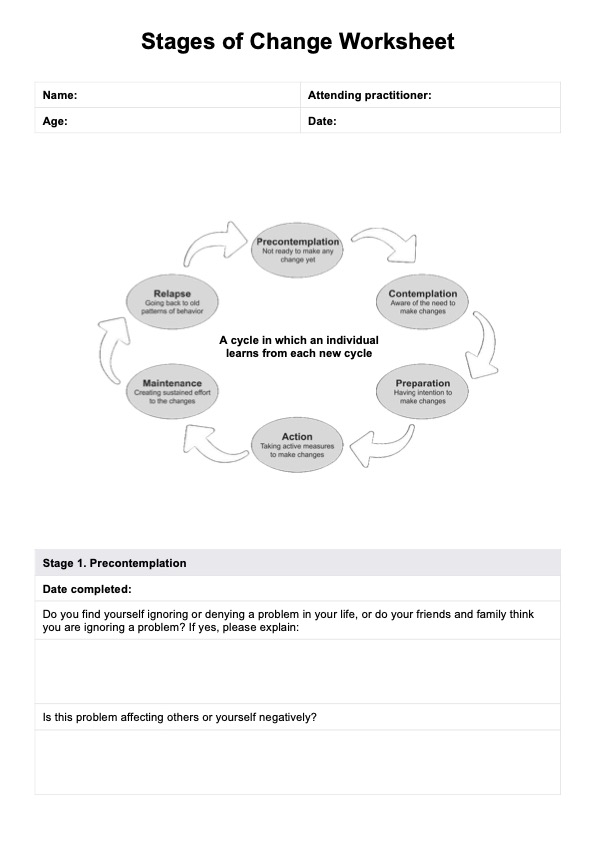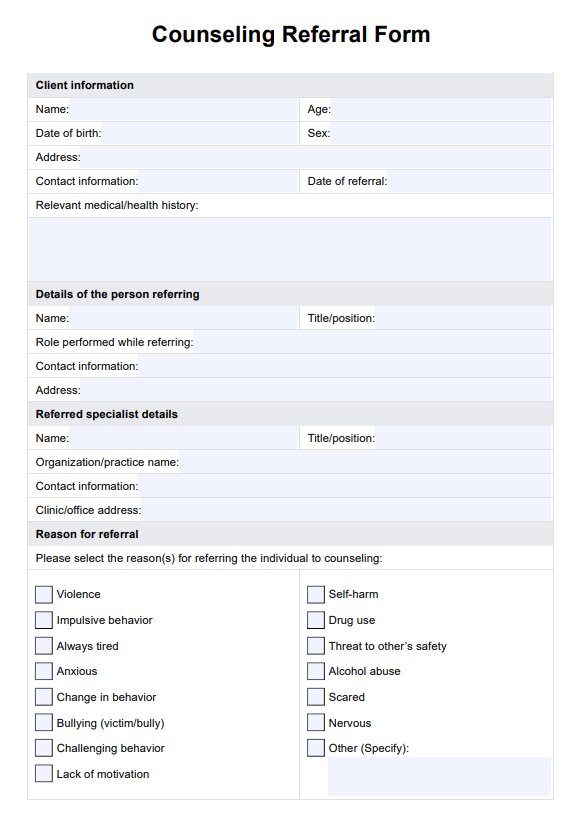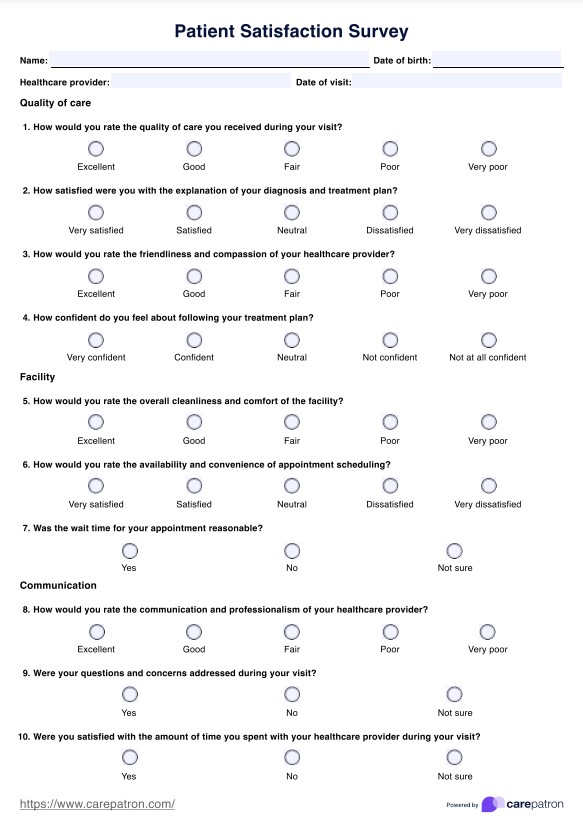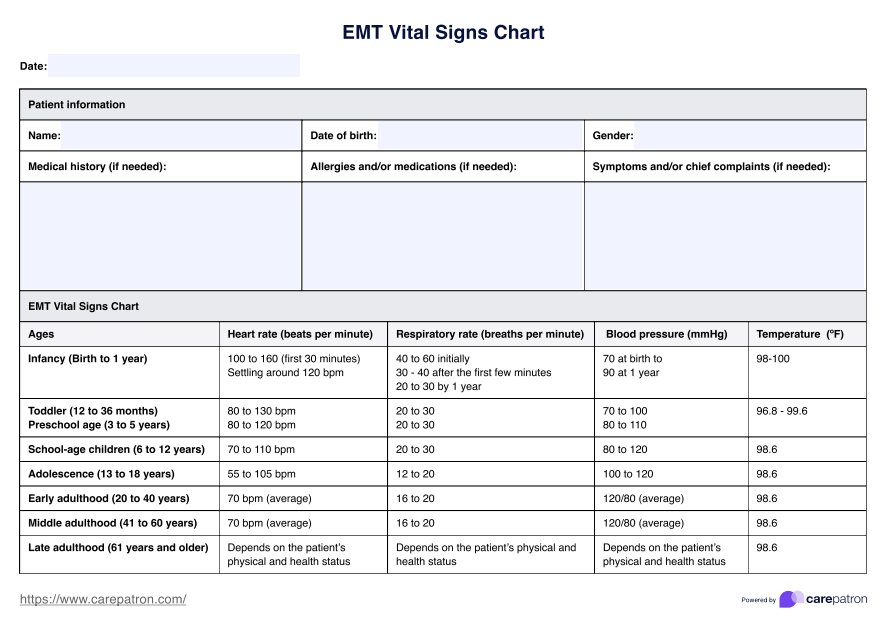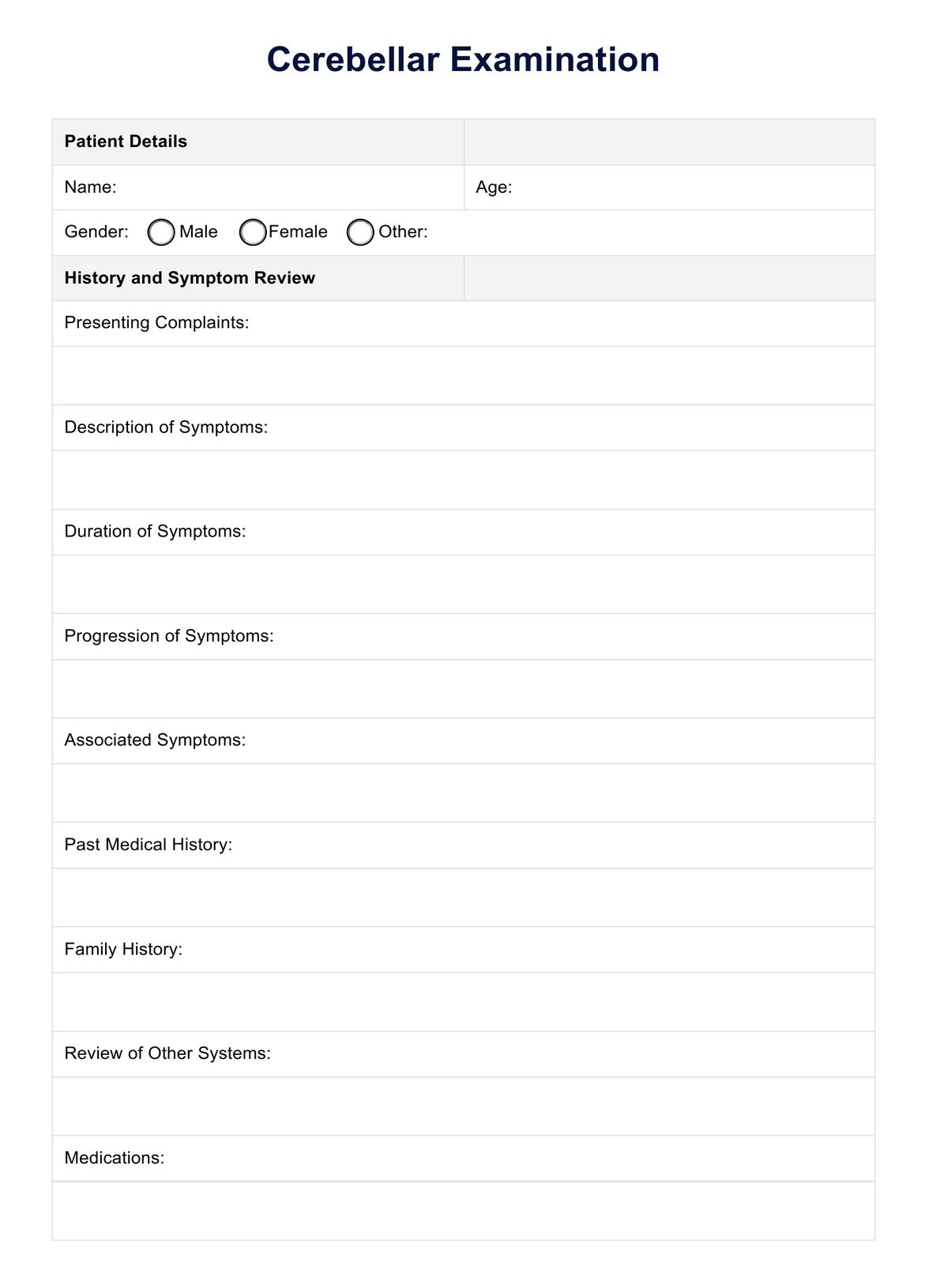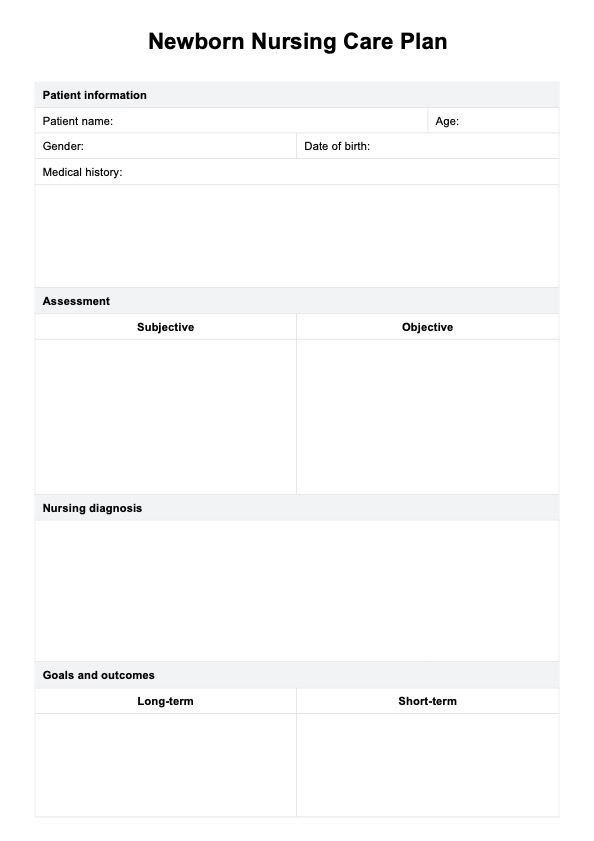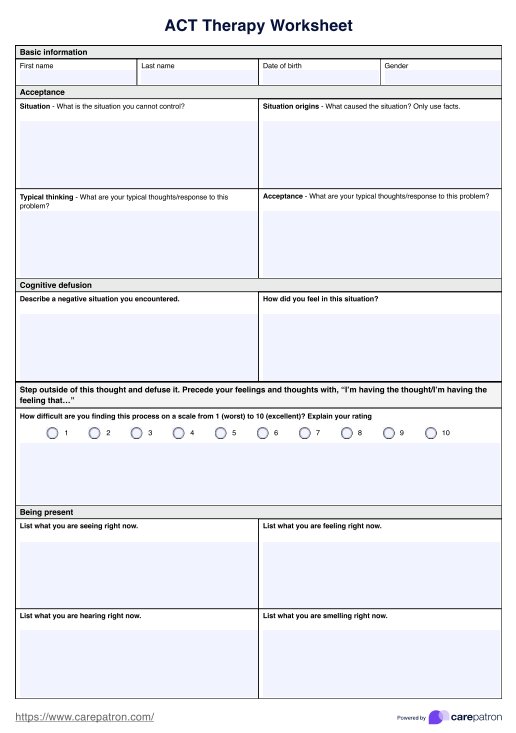Discharge Planning Worksheets
Unlock the power of effective patient care with our comprehensive guide on Discharge Planning Worksheets. Ideal for mental health and hospital discharges.


What is a Discharge Planning Worksheet?
A is a critical tool healthcare providers employ to facilitate a smooth and safe transition for a patient from a hospital or healthcare facility to a home or another care setting. It is a comprehensive blueprint outlining all aspects of the patient's care after discharge, including ongoing treatments, medication schedules, follow-up appointments, and patient education.
While these worksheets are used widely across healthcare, specific versions, like a discharge planning mental health worksheet or a homeless patient discharge planning worksheet, cater to unique patient populations and their particular needs. The CMS discharge planning worksheet is another version that aligns with the Centers for Medicare and Medicaid Services requirements.
A Discharge Planning Worksheet is a versatile resource that adapts to each patient's unique needs. It acknowledges that every patient's circumstances differ and allows for a personalized approach to discharge planning. It can be used across settings, from large hospitals to smaller outpatient clinics, and for other patient groups, such as those with mental health issues, homeless patients, or chronic diseases. The worksheet forms an integral part of quality patient care by ensuring clear communication among various healthcare providers and aligning them towards a common goal - the patient's well-being.
Discharge Planning Worksheets Template
Discharge Planning Worksheets Example
How does it work?
The Discharge Planning Worksheet follows a systematic process, ensuring every aspect of patient care post-discharge is meticulously planned. Here are the steps involved:
Part 1: Discharge Planning Checklist
A Discharge Planning Checklist is a comprehensive guide that healthcare providers fill out, initial, and date upon completing each task. The process generally follows these steps:
Step 1: Patient Name
The checklist begins with the patient's name.
Step 2: Initial Nursing Assessment
In this step, the initial nursing assessment is completed to fully understand the patient's current health status and care requirements post-discharge.
Step 3: Prior to the Discharge Planning Meeting
In this phase, the healthcare team collects all the necessary medical and support information for the discharge planning meeting. This may include checklists, discharge planning meetings, etc.
Step 4: During Discharge Planning Meeting
In this step, the healthcare provider discusses questions and provides instructions to the patient and the family members. The patient and family are typically involved in ensuring a holistic plan that caters to the patient's physical and mental needs.
Step 5: Day of Discharge
On the discharge day, the checklist includes final medication instructions, confirmed follow-up appointments, and ensuring the patient and family have the necessary contact information for further questions or concerns.
Part 2: Discharge Planning Daily Checklist
The Discharge Planning Daily Checklist monitors and tracks the patient's progress daily from Day 1 to Day 4 post-discharge.
Step 1: Patient Name
Similar to the previous checklist, it begins with the patient's name.
Step 2: Day 1 to Day 4
For each of the four days post-discharge, the healthcare provider completes tasks pertinent to the patient's recovery. This can include medication administration, wound care, monitoring vital signs, and observing changes in the patient's physical and emotional well-being.
Step 3: Notes
In the "Notes" section, healthcare providers can document any significant observations, patient condition changes, or care plan updates. This information can be instrumental in tracking the patient's recovery progress and adjusting their care plan as needed.
When would you use this Template?
The Discharge Planning Worksheet is not a one-size-fits-all solution. Its utility is vast, extending across myriad scenarios, each unique in its way. It is especially designed to adapt to different care contexts, each addressing a distinct set of requirements.
Here are four typical scenarios where a Discharge Planning Worksheet is invaluable:
Chronic Condition Management
If a patient has been admitted due to exacerbation of a chronic condition like heart disease or diabetes, a detailed Discharge Planning Worksheet is crucial. It outlines the care plan, medication schedule, lifestyle modifications, and necessary follow-up appointments to manage the condition effectively.
Mental Health Treatment
A specialized discharge planning mental health worksheet is vital for patients undergoing treatment for mental health issues. It outlines the ongoing treatment plan, resources for counseling and therapy, community support systems, and crisis management strategies.
Homeless Patient Care
A homeless patient discharge planning worksheet is critical for homeless patients or those lacking stable housing. It includes information about shelters, food programs, community healthcare services, and social services that can provide support after discharge.
Adherence to CMS Guidelines
A CMS discharge planning worksheet is essential to meet regulatory guidelines if you're a healthcare provider dealing with Medicare or Medicaid patients. It ensures that the care plan adheres to CMS requirements, which can be crucial for reimbursement and compliance.
Benefits
Utilizing a Discharge Planning Worksheet has several profound benefits for healthcare providers and patients. These range from improving care quality to ensuring a seamless transition from hospital to home.
Below are five notable benefits of using a Discharge Planning Worksheet:
1. Enhanced Quality of Care
The Worksheet is a comprehensive guide to the patient's healthcare journey post-discharge. It enables healthcare providers to address all necessary care elements, reducing the likelihood of readmission and improving patient outcomes.
2. Improved Coordination
With a detailed worksheet, coordination among various healthcare providers becomes easier. It serves as a centralized source of critical patient information, ensuring everyone involved in the patient's care is on the same page.
3. Effective Patient Education
The worksheet is not just a tool for healthcare providers; it's also an essential resource for patient education. It outlines instructions on self-care, medication administration, follow-up appointments, and more, empowering patients to participate in their healthcare actively.
4. Regulatory Compliance
The worksheet helps ensure compliance with regulatory guidelines, particularly in the case of CMS discharge planning. This can be vital for healthcare providers to secure reimbursement and avoid regulatory issues.
5. Accessibility and Cost-efficiency
With the availability of free discharge planning worksheets, healthcare providers can ensure quality care without worrying about additional costs. Digital tools have made these worksheets accessible and easy to use, even for complex scenarios like mental health or homeless patient discharge planning.
Commonly asked questions
Healthcare providers, such as doctors, nurses, and social workers, use the Discharge Planning Worksheet.
Discharge Planning Worksheets are used when planning a patient's transition from the hospital to home or another care setting.
The Discharge Planning Worksheet outlines a patient's post-hospital care plan, including treatments, medications, follow-up appointments, and patient education.


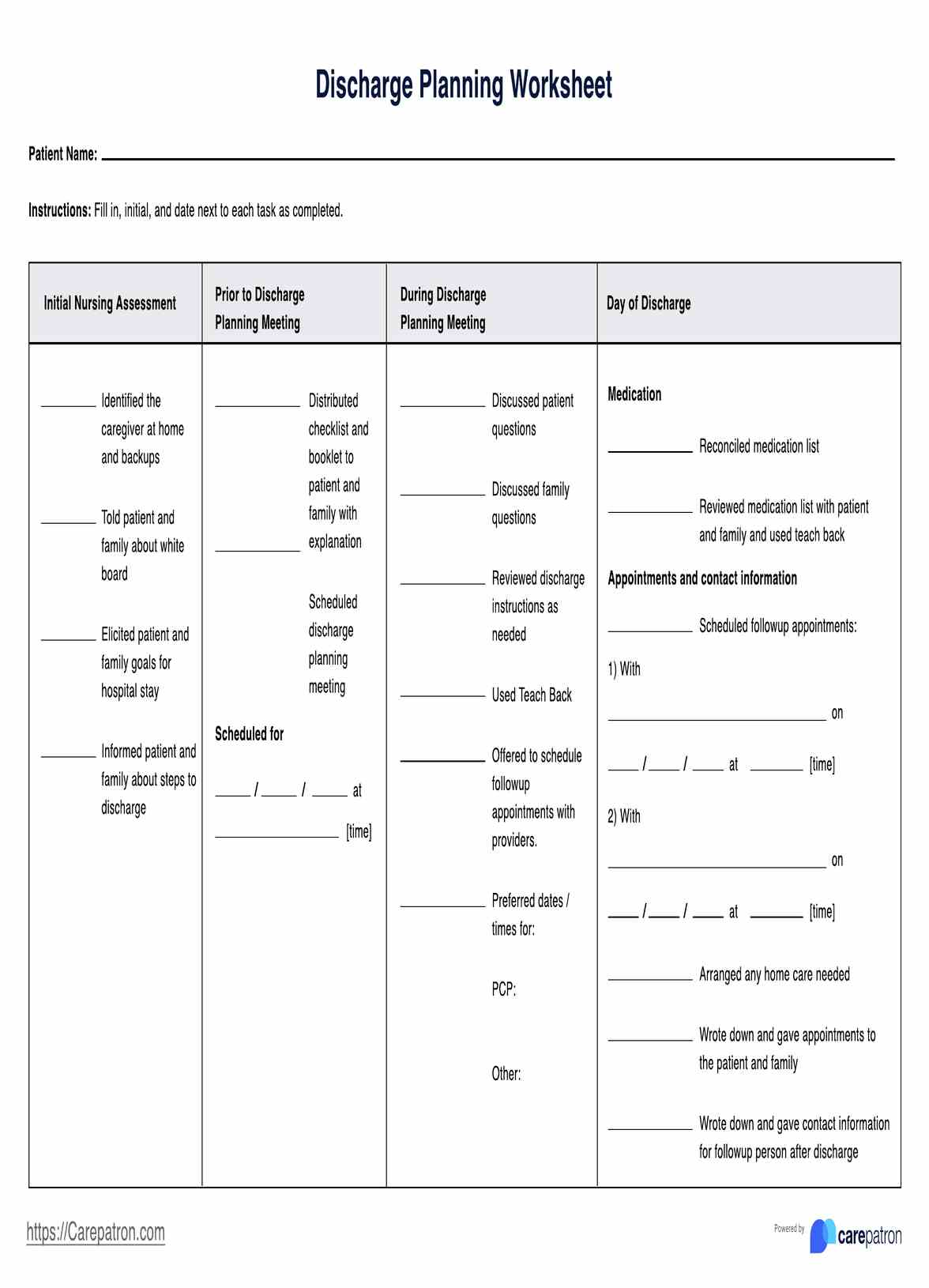
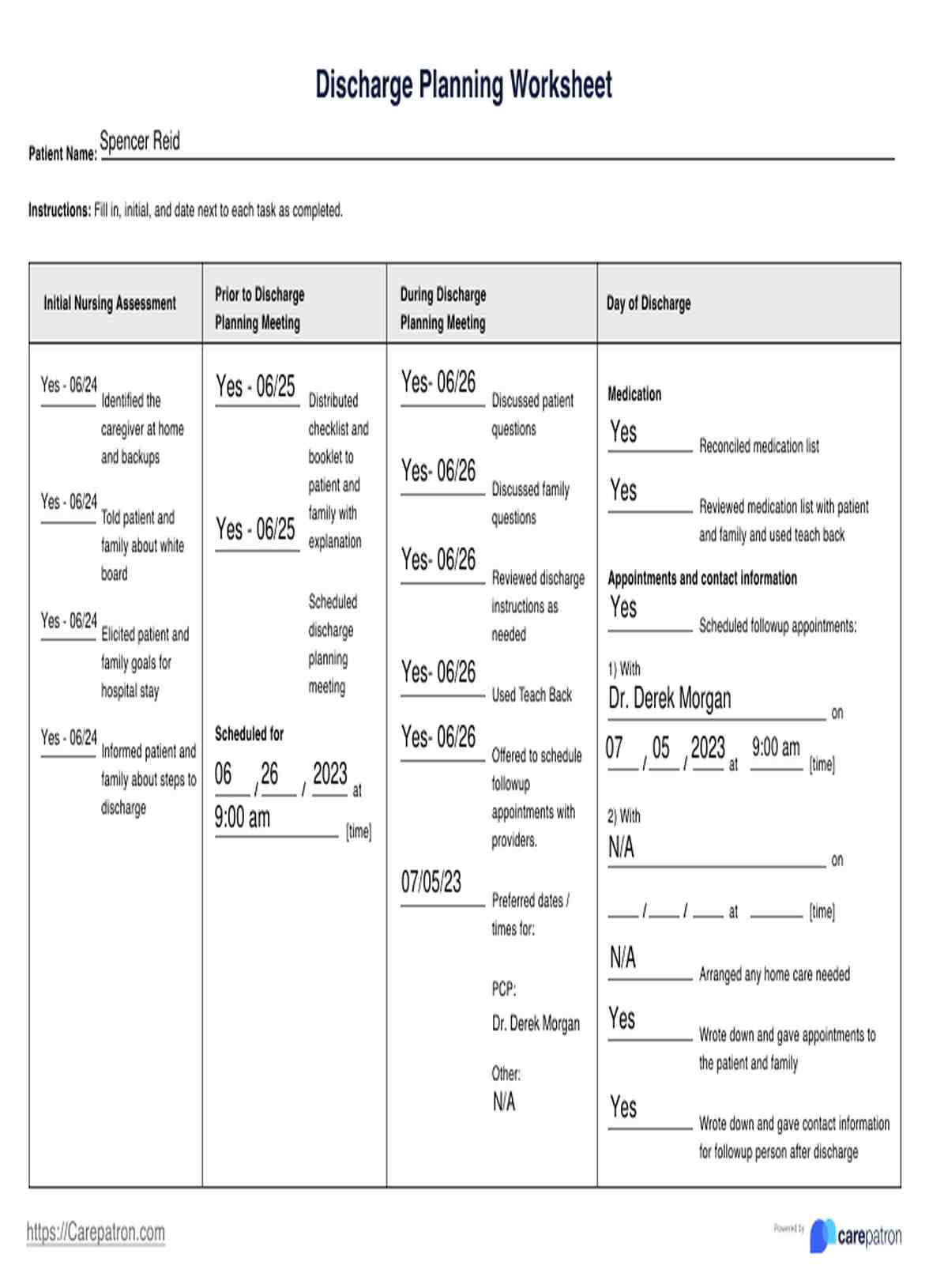

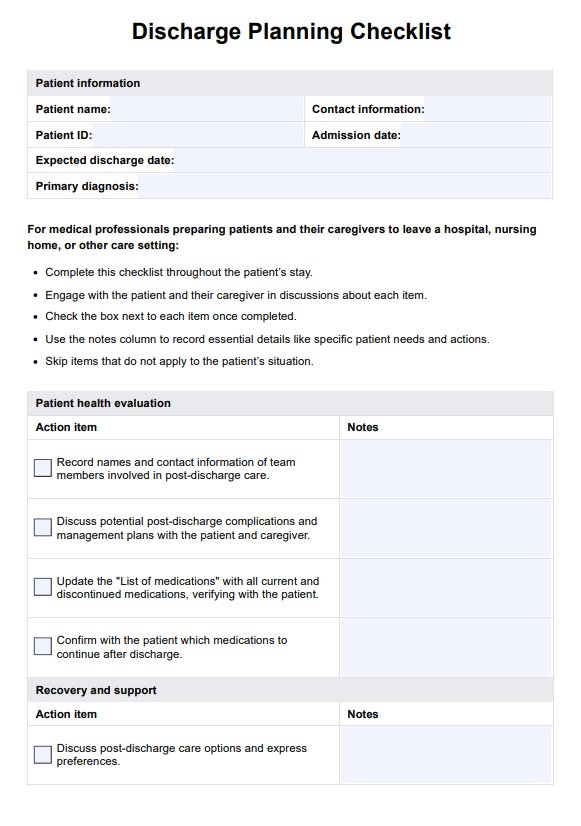












-template.jpg)























































































